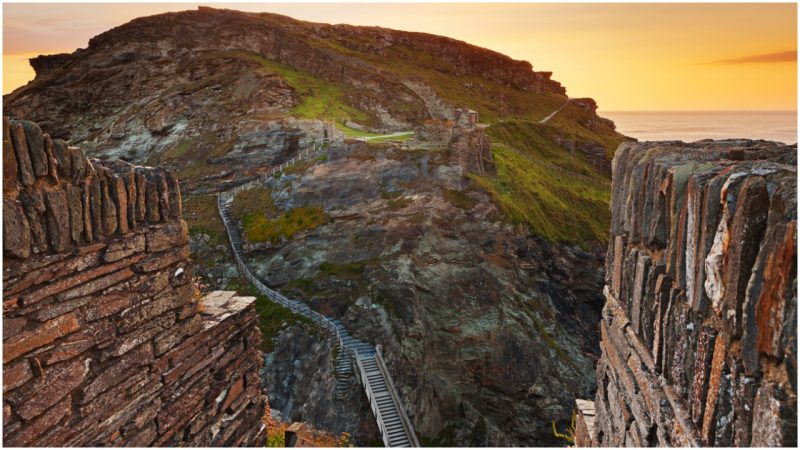On the rocky north coast of Cornwall stands what is left of Tintagel Castle, built more than 1,000 years ago to house a royal family that lived lavishly on provisions and food imported from Turkey, Spain, and other countries on the Mediterranean.
An ongoing archaeological dig at the castle has unearthed pieces of French and Spanish glassware, top quality tableware from Turkey, and wine, oil, and amphora from Greece. Unearthed bones show sheep, goats, pigs, and cows were regularly butchered and cooked. Seafood such as fish and oysters also filled in the diet of the people who lived there in the 5th to the 7th centuries, people who historians believe may have been rulers of Cornwall.
While Tintagel has been the site of human occupation since the 3rd century as evidenced by recovered foundations of small houses and the imported goods from the Mediterranean, the castle became widely known after Geoffrey of Monmouth’s History of the Kings of Britain was published in 1138. In his history, Geoffrey claimed that King Arthur’s parents, Uther Pendragon and Igraine, conceived him at Tintagel.
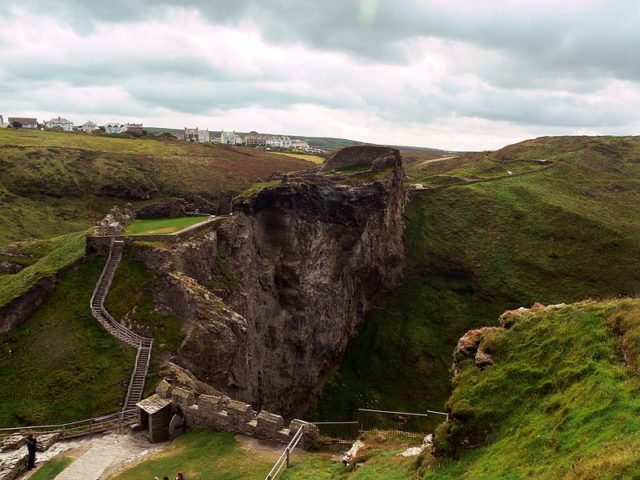
It is not clear why Geoffrey used Tintagel as the location of Arthur’s birth, but researchers guess it may have been the romanticism of the windswept cliffs and physical beauty that inspired him. Some claim the legendary love story of Tristan and Isolde took place at Tintagel, inspiring Geoffrey to set his story in the same place.
All of these romantic tales motivated Richard, earl of Cornwall and brother of King Henry III, to build a castle there about 1225. As the brother of a king, Richard was part of intercontinental politics and traveled extensively. As with many wealthy medieval men, he spent little time at his castle. After his death in 1272, the castle was abandoned and began to decline.
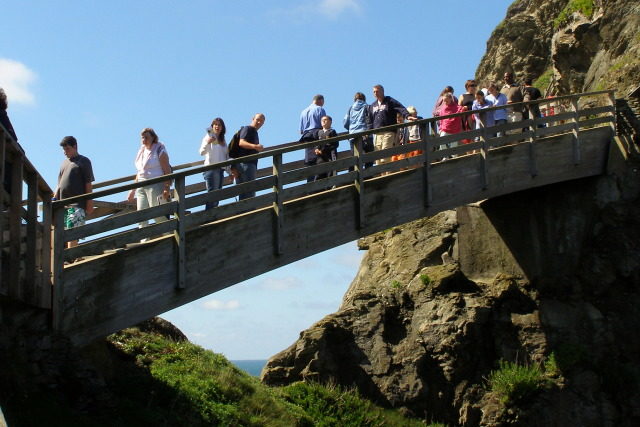
The castle had been built on the rocks overlooking the ocean, and coastal erosion played a big part in the deterioration. Other Cornish nobles sporadically inhabited the castle, but by 1600 it had, again, been abandoned.

The site is currently managed by English Heritage, a charitable public entity set up to manage the hundreds of historical sites found in Great Britain. The group is presently under fire for allegedly using the story of King Arthur to attract visitors rather than focusing on the area’s true medieval heritage. After a face of Merlin the magician was carved into a rock, the rallying cry became “This is not Disneyland, it’s Cornwall.”
The castle was built straddling a large ravine from the mainland to a small island where the ancient remains of some buildings are located. English Heritage is planning on building a walking bridge to allow visitors to explore the entire area. Critics, of which there are many, claim the bridge will accelerate the deterioration and, said one in an interview in The Guardian, the bridge will turn the site into a “cash cow theme park” and “English Heritage would be first to object if this was attempted on someone else’s historic site.”
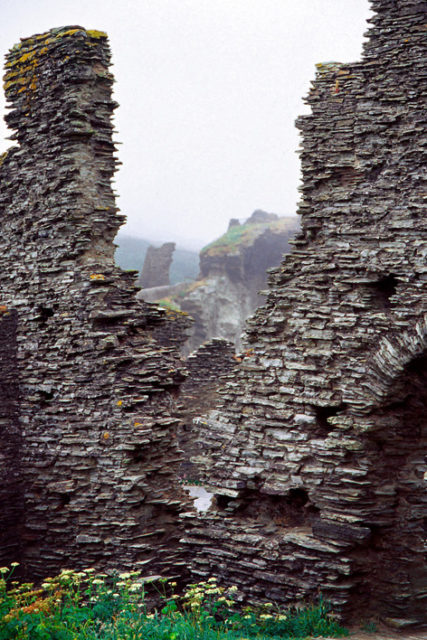
The Cornwall council has received letters stating that the planned bridge would be so high that people would be reluctant to use it and it would be unusable during periods of high wind. Critics have also claimed that because the bridge will be built in two parts with an almost two-inch gap between the two sides, it will be dangerous.
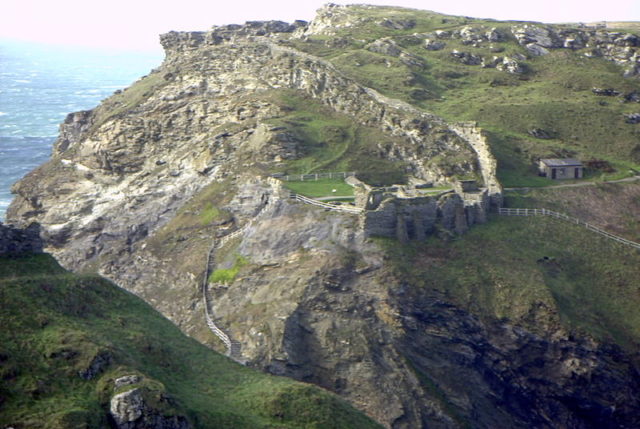
English Heritage has emphasized that the bridge poses no dangers and it will enhance visitors’ historical knowledge of the area. Moreover, it will reduce the number of visitors climbing the length of old stairs that are currently the only way to reach the island. According to Georgia Butters, English Heritage’s head of operations in Cornwall, “We welcome all feedback as it is important that we get this right. Over the past year, we’ve been consulting with–and listening to–the public and interested parties. Above all, the footbridge is designed to complement, not compete with, the surrounding spectacular landscape.”
Recently the design of Belgian company Ney & Partners Civil Engineers and British architects William Matthews Associates has been approved by English Heritage but still must go through approvals of planning and meetings with authorities.
